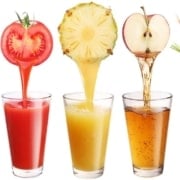Confectionery Industry Goes Clean Label
The confectionery market in the United States had an estimated value of $35.86 billion in 2016. The value is expected to rise to over $38.19 billion in the next four years. According to a market research company, Technavio, confectionery companies sold a total of 7.31 billion pounds of products last year.
The slow forecast of growth for the confectionery industry (0.81%) made industry leaders think twice about what they need to do to improve their sales. Strategies such as acquisitions, diversifying the portfolio, and alignment with consumer trends have been implemented. One of the strategies that this particular industry implemented was clean labeling.
Confectionery Challenges In Clean Labeling
The candy industry is known to use different flavors and vibrant colors of using artificial flavors and dye. The growing consumer demand for transparency and simple ingredients is a difficult situation for candy companies.
However, confectionery companies plan to stay true to their promise of clean labeling. In February this year, Mars, Inc. pledged to remove artificial colors from their gum, chocolate, and other food products within the next five years. Other confectionery giants like Nestle and Hershey’s followed suit.
Currently, most products produced by Mars, Inc. no longer contain artificial colors, but the company is still doing its best to clean their products from synthetic ingredients thoroughly. The challenge here is how candy companies will make their colorful candies like Skittles and M&M’s more natural.
While the purpose of clean labeling is to benefit the company and the consumers, the cost associated with it can be very immense. Using natural ingredients require substantial investments particularly for the smaller confectionery companies. It can be hard for smaller businesses to move in the direction of non-GMO and natural confectionery and it can take its toll in the economies of scale for the candy company.
Taste Still Rules in Priorities
With the challenges that lie in making confectionery without the use of artificial flavors and colors, most candy companies are now prioritizing the taste and quality of their products. Marketing communications manager for Wrigley, Michelle Green, noted that consumers are not so keen at compromising the taste of their favorite sweets.
This has led companies to innovate on the types of products that they produce. In the recent Sweets & Snacks Expo, bold flavors were featured, and new lines of snack options were created including chocolate barks and bites that come with unusual flavor combinations like oranges, blueberries, and pomegranates.
Fruit combinations with conventional confectionary are not only an interesting take on healthy snacks, but it also helps improve the flavor without using artificial flavors and sweeteners. According to Susan Whiteside from the Washington chapter of the National Confectioners Association, chocolate and fruit combination will be the top trend in the confectionery industry that has increased forecasted revenue by as much as 116%.
Clean labeling is a popular trend in the food industry, and while some have quickly adapted to the trend, the confectionery industry finds a lot of obstacles for now.
Inspired by www.foodbusinessnews.net




